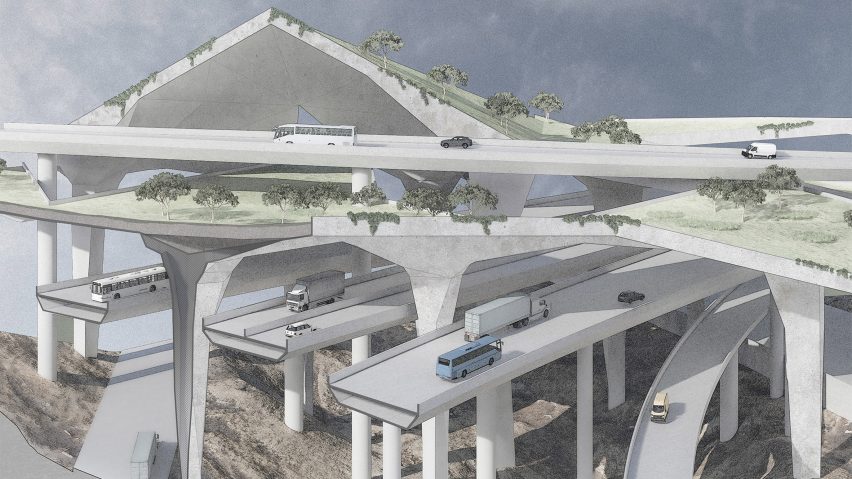
University of Southern California presents ten student architecture projects
Dezeen School Shows: a project exploring the future of urbanism through biomaterials like algae and mycelium is included in this school show by the University of Southern California.
Also included is a project that repurposes vacant spaces into farms and kitchens to contribute to sustainable systems within the food industry and another analysing the impact of personal trauma on architecture.
University of Southern California
Institution: University of Southern California
School: School of Architecture
Course: Undergraduate Architecture Programs
Tutors: Erin Kasimow, Hadrian Predock, Rob Berry, Eric Haas, Wendy W Fok and Jimenez Lai
School statement:
"Committed to the fundamental concerns of the built environment for over 100 years, USC School of Architecture uses Los Angeles as a laboratory, embracing a global outlook with progressive, critical thinking as it applies to architecture, urban fabric, landscape and building technology as well as the role it plays in positive social change.
"We offer two undergraduate programs: Bachelor of Science in Architecture plus Inventive Technologies (BSA plys IT) and Bachelor of Architecture (B Arch).
"The BSA plus IT four-year program examines the built environment through the lenses of architecture, technology and entrepreneurship and aims to contribute to the resolution of intractable problems such as climate change, social justice and societal wellbeing through the invention and development of new products at an architectural scale.
"This program is for students who want to work at the nexus of architecture, entrepreneurship and design technologies.
"The B Arch five-year degree is an accredited program preparing students for eventual architectural licensure and a professional career in architecture.
"Students start by learning the fundamentals of design in foundation studios for the first three years before participating in advanced studios in one of our international semester abroad programs or on campus with notable faculty and local architects.
"The education will culminate in a public presentation of their thesis project on a subject selected by the student.
"In addition, the program offers the Integrated Path to Architectural Licensure (IPAL), a structured path to earning an architecture license that gives students the opportunity to complete a portion of the core licensure requirements while earning a degree.
"As a STEM program, international students may be eligible for a 24-month extension of post-completion OPT (for a total eligibility of up to 36 months)."
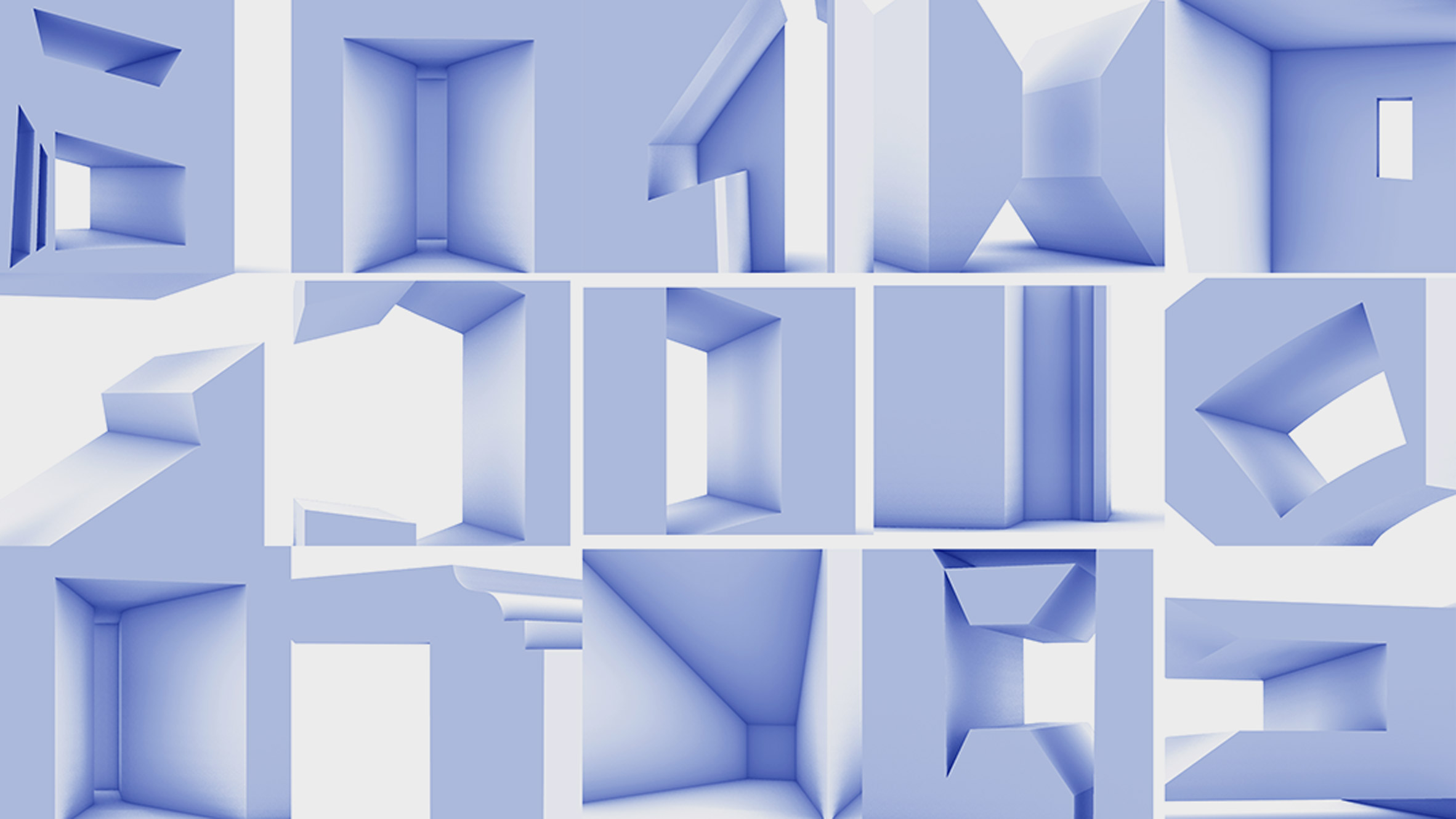
The Decontextual by Leeor Abutbul
"The Decontextual uses photographic abstraction as a generative tool to reconsider and reevaluate architectural spaces and representation.
"Inspired by a curated selection of architectural photographs depicting interiors and specific details or cropped moments of spaces, rather than overall depictions of rooms or building exteriors, led to a perspective-based approach to designing.
"Emphasis is placed on smaller scale architectural moments such as apertures, thresholds and corners specifically composed to focus attention on elements that might otherwise go unnoticed.
"Buildings are designed from inside to out by evaluating how these moments interact with colour, light and shadow.
"The final product is presented entirely via photographed interior perspective images in order to generate new narratives about familiar places and challenge conventional notions of architectural representation."
Student: Leeor Abutbul
Course: ARCH502A: Face Value
Tutor: Erin Kasimow
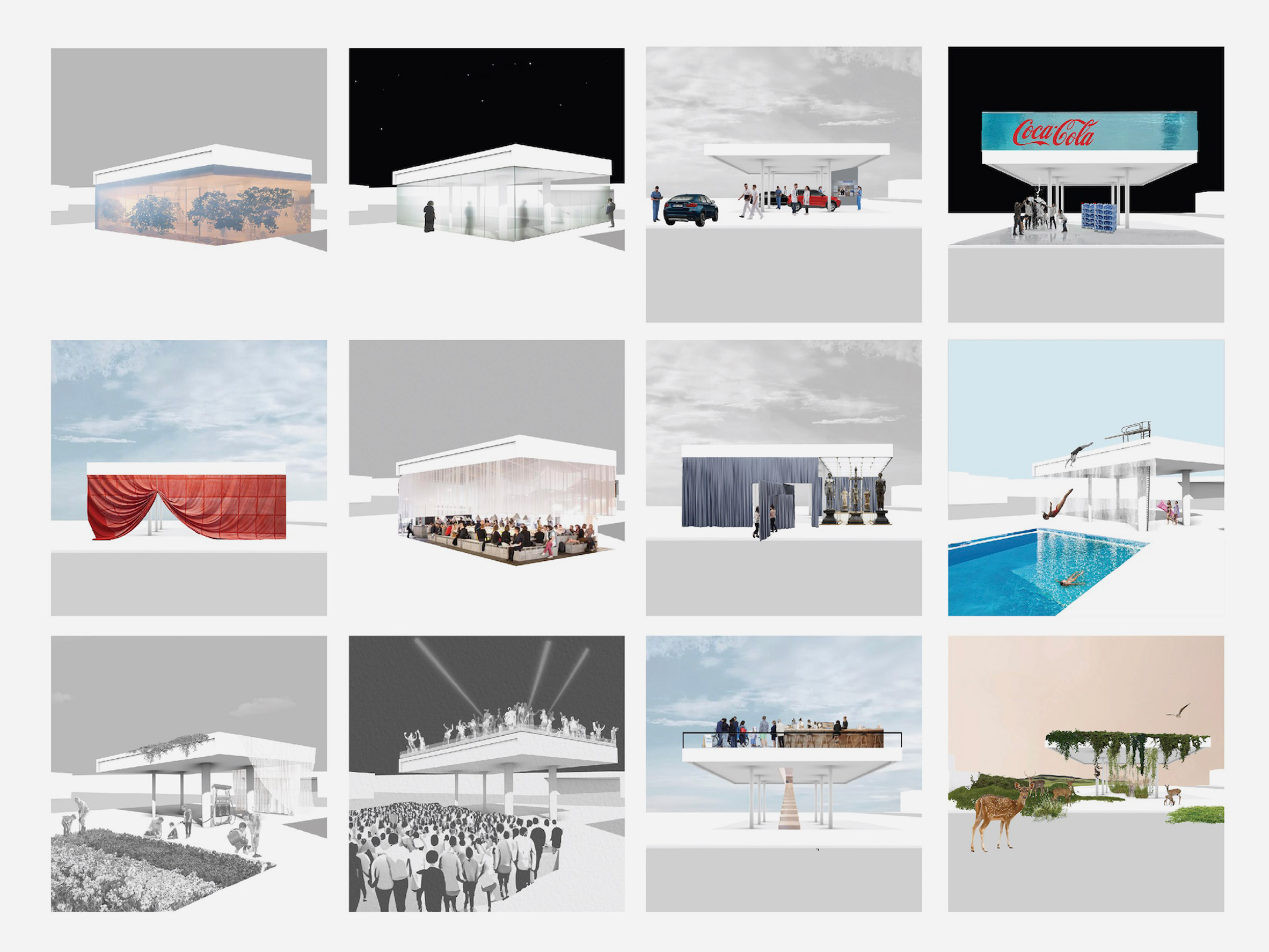
Gas Stations in LA: Translations of Representation by Zoe Jackson
"In today's digitally-driven, media-obsessed world, photography pervades the everyday.
"Though purportedly portraying reality, even in the most commonplace photographs, perspectival distortion subverts imagery, making subjectivity inextricable from the medium.
"This thesis explores the power of photography as a design tool in architecture.
"The project looks to gas stations as a case study for liminal spaces within the urban fabric of Los Angeles, investigating information synthesis through a translation across mediums of representation.
"Manipulation techniques of hyperrealism and information reduction generate highly curated composites that are translated into physical models for radical design interventions, aiming to reimagine the future of gas stations in Los Angeles through world-making."
Student: Zoe Jackson
Course: ARCH 501: Adventures in the Algorithmic Ordinary and/or Odd Operations on the EverydayARCH 501: Adventures in the Algorithmic Ordinary and/or Odd Operations on the Everyday
Tutor: Hadrian Predock
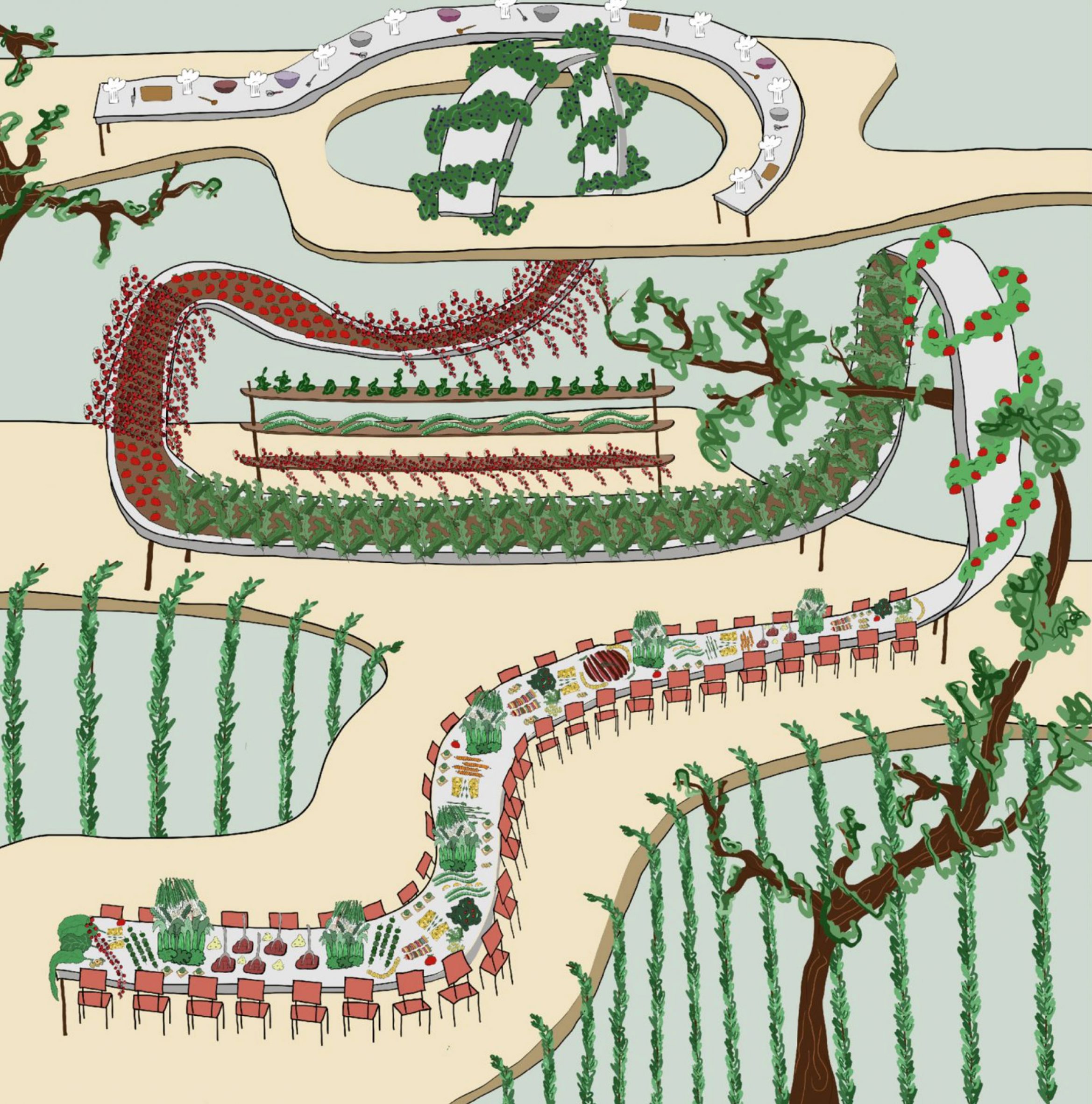
Block by Block by Tayla Akpinar
"Block by Block reimagines urban spaces with a community-centred approach by repurposing schoolyards into micro-farms, vacant lots into kitchens and underutilised streets into food markets, creating a sustainable food ecosystem.
"This locally-integrated food network combats food deserts by redefining the conventional association of fresh produce with luxury dining, making healthy food more accessible to lower-income neighbourhoods.
"By shortening the distance from farm to table and creating employment opportunities within the community, access to nutritious meals within urban landscapes is democratised.
"Block by Block represents a transformative step towards healthier, more inclusive urban environments, one block at a time."
Student: Tayla Akpinar
Course: ARCH502A: Public Engagement
Tutor: Rob Berry
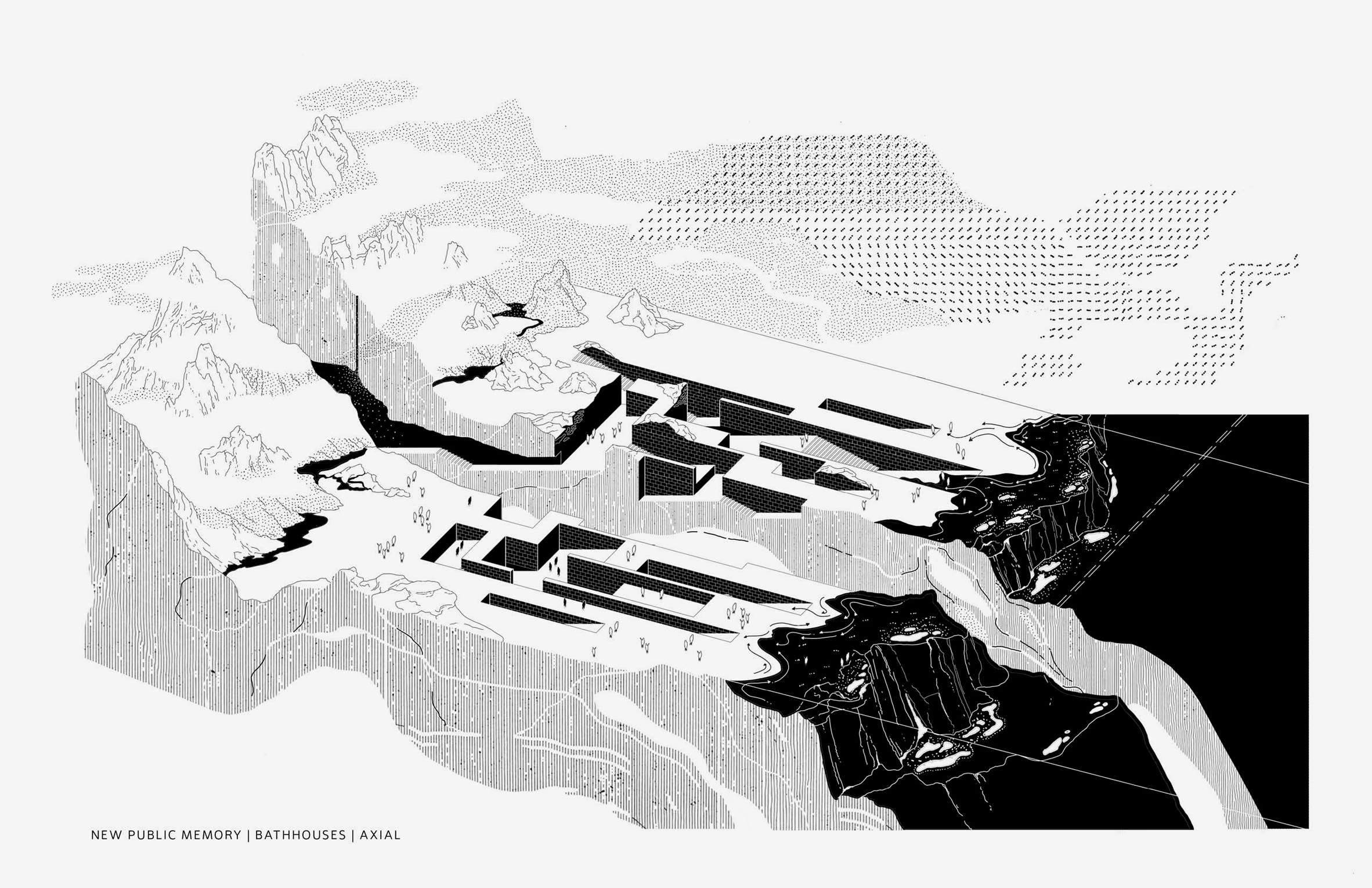
Re(De)-Visit: Rewriting a Collective Memory for Korea's Mended Future by Alexander Jeong
"Korea's Demilitarized Zone is a dichotomic political and ideological divide that marks the division and separation between two polar extremes.
"The paradox of the border condition is that through its temporal maturation, the line becomes blurred, ironically existing as softer and more nuanced forms of reading the physical environment.
"Re(De)-Visit destabilises the hierarchical and dominant 'hard readings' of the map by resurfacing dormant, soft readings of the land, allowing for a greater cultural, social and spatial experience of the DMZ's near future.
"The symbolism of the harsh split is addressed through revisiting intense historical events and experiential tropes of the divide, recreating and offering a new collective memory, one which is experienced through a bottom-up, soft, blurred experience of the land, one step at a time."
Student: Alexander Jeong
Course: ARCH502A Public Engagement
Tutor: Rob Berry
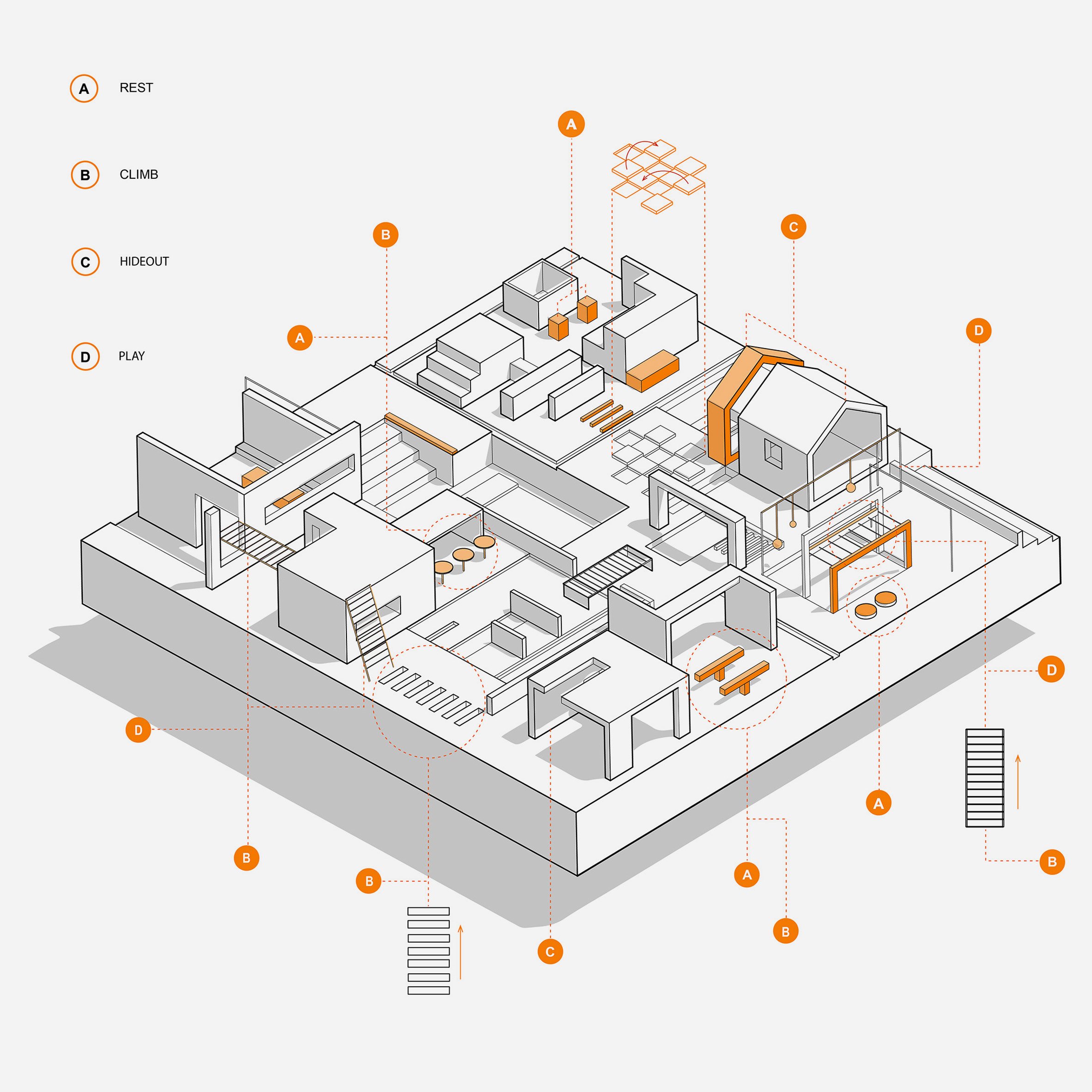
An Architectural Bargain: Games of Requit by Daniela Liang
"The incorporation of intentional error is not novel.
"From the works of Borromini to those of MVRDV, linear perspective and visual perception of form and geometry have become tools for manipulating perceived reality.
"The intentional design of error, or the trick, is a productive language for exercising viewer agency.
"By creating an opportunity for the viewer to engage in an investigative experience, the trick becomes a game-like negotiation of reality within architecture.
"The result of these visual tricks creates privileged views and abstract reality where the uncovering of truth becomes enriching to the viewer's understanding of the architecture."
Student: Daniela Liang
Course: ARCH 502A Errors and Omissions
Tutor: Eric Haas
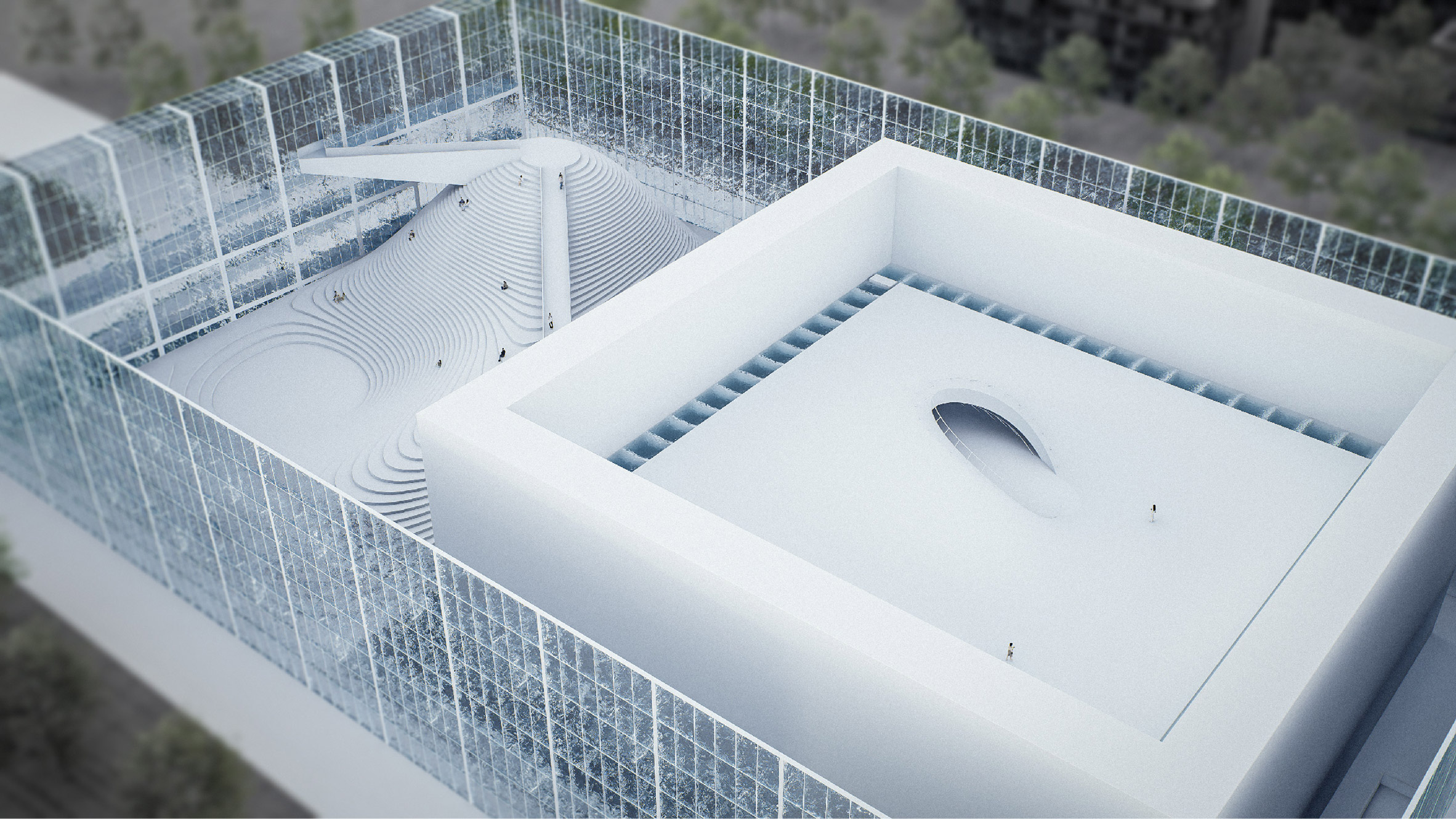
Shaping Emptiness by Aaron Chen
"Exploring the oft-neglected facet of human experience, this thesis accentuates the significance of emptiness and underscores the primacy of self-reflection over conventional notions of being affected.
"It proposes a methodology that prompts individuals to engage deeply in introspection, perceiving existence through an exterior prism.
"This transformative journey, guided by one's senses (lighting, sounds etc.), transitions individuals from a heightened awareness of time to a state of disregard for it, culminating in the attainment of emptiness.
"Through this process, individuals actively cultivate a profound understanding of experience, embracing personal growth and insight rather than merely experiencing feelings."
Student: Aaron Chen
Course: ARCH502A Errors and Omissions
Tutor: Eric Haas
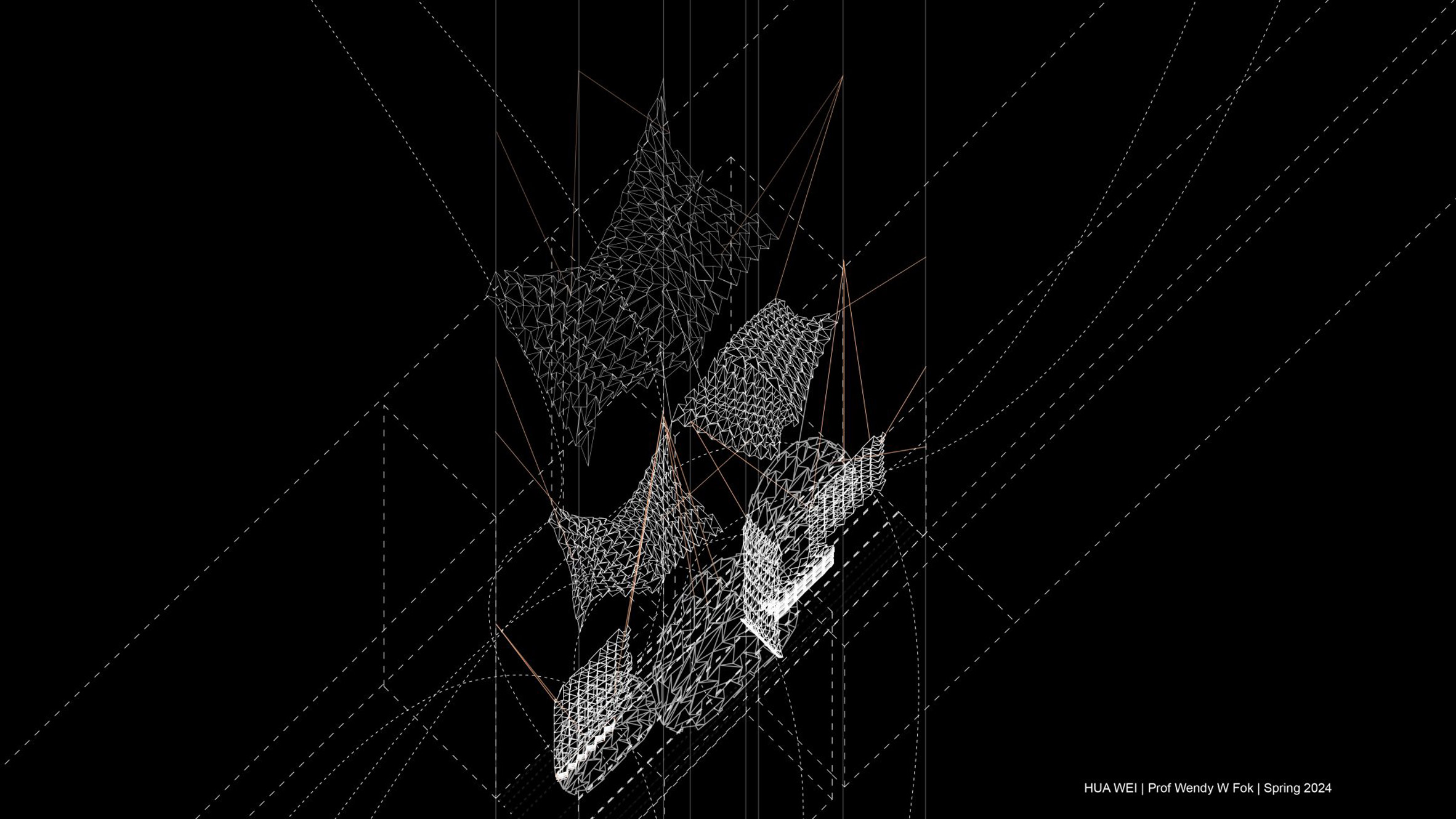
Revitalising Urban Connectivity: Origami-Inspired Solutions for Los Angeles' Neglected Spaces by Hua Wei
"Numerous communities across the United States are confronted with heightened crime rates and a dearth of facilities and initiatives fostering social interaction – many streets languish in neglect, resulting in a dishevelled and underutilised appearance.
"Taking the abundant alleyways in Los Angeles as a prominent illustration, I propose a transformation of these overlooked informal spaces into a fresh network for pedestrian pathways and recreational pursuits, seamlessly woven into the existing urban infrastructure of streets and sidewalks.
"Drawing inspiration from the malleability and versatility of origami, the design envisions structures capable of effortlessly morphing to accommodate diverse user requirements.
"This endeavour seeks to link the expansive multi-story buildings characteristic of Los Angeles, reinvigorating communal engagement and recreational opportunities, thereby amplifying safety and enlivening the city's thoroughfares.
"Such an approach holds promise for replication across neglected spaces nationwide, fostering an uplifting community on a broader scale."
Student: Hua Wei
Course: ARCH502A Hidden Infrastructure
Tutor: Wendy W Fok
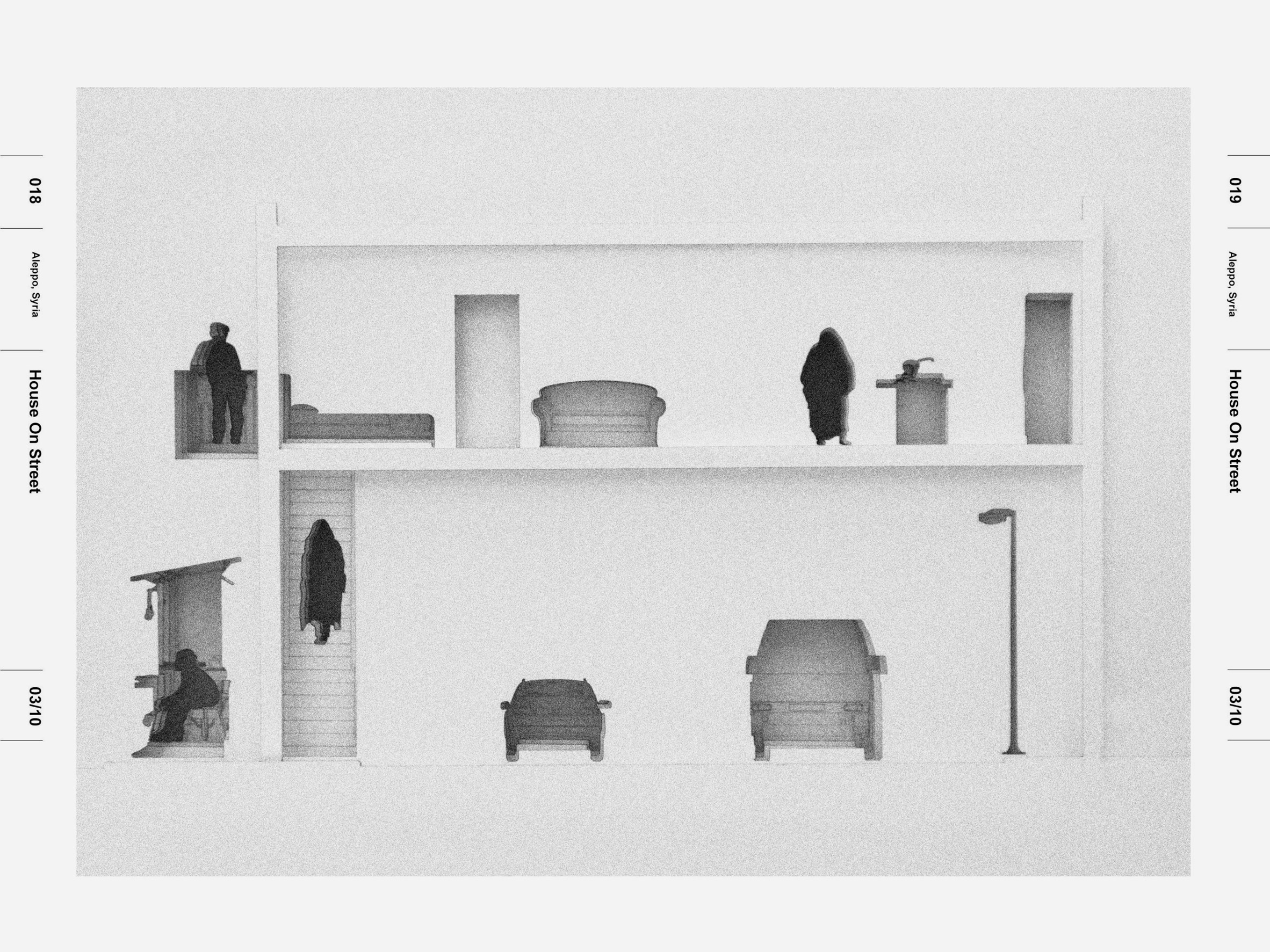
Day Before War by Arianna Schaden
"This project explores the impact of trauma on our memory of architecture, through excerpts from memoirs, looking at pre-war memories of dwelling spaces.
"Layers of transparency separate what was forgotten from what was remembered.
"The replacement of omissions becomes vital to making rational pieces of architecture that function as we are conditioned to expect.
"The absence of a door creates a room closed on all four sides, and the loss of stairs makes levels all but useless.
"A surrealist undertone is exposed which unveils the true essence of a memory – it allows for disobedience against the rules of logic, gravity and order."
Student: Arianna Schaden
Course: ARCH502A Stories of the Second Decade
Tutor: Jimenez Lai
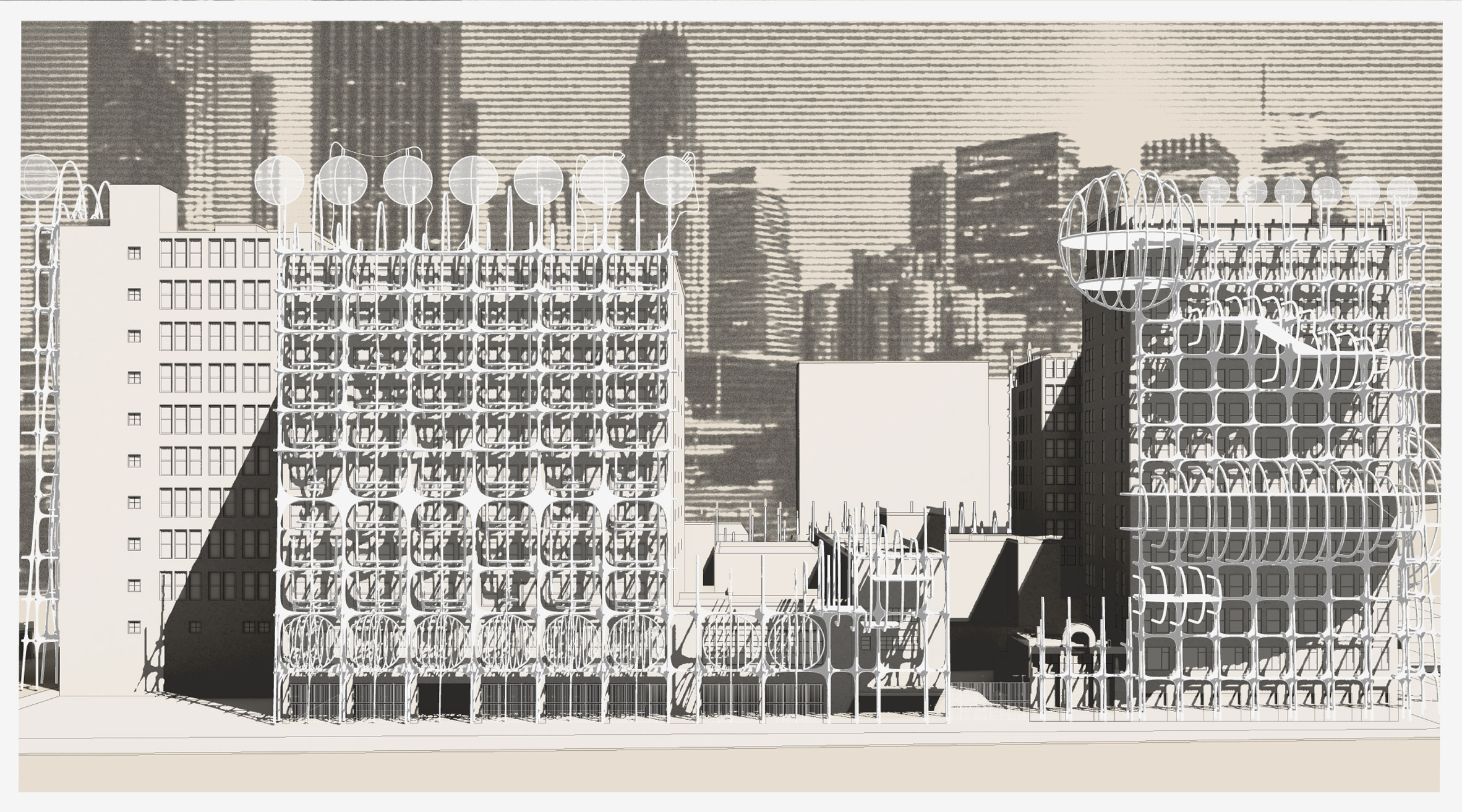
An at-Home Manual for Urban Grafting by Randy Rong
"This project investigates the evolving dynamics between bio-building materials and ageing buildings – where their intersection results in a system for urban reuse and climate intervention.
"This proposal explores the potential of future urbanism through the introduction of advanced biomaterial envelopes in the form of permanent scaffolding, with extruded realms of space forming a network on the surface of existing buildings to support, enhance and provide beyond its original purposes.
"Such a system deviates from existing building surface mediations by employing algae and mycelium to achieve results in both realms of reuse and climate-positive energy production – as it evolves in time, the intervention intrudes into the existing spaces and creates new typologies centred around current programs, arriving at new urban spatial conditions.
"Urban grafting beckons the utility of architectural reuse to adapt existing structures, to evolve needs and sustainability standards mirroring the plasticity seen in grafted plants and to ensure the longevity and relevance of the current built environment.
"To raise awareness of the lasting effects of short-lived buildings through the lens of climate change, this project provides a case for biomaterials as a worthy strategy for future building."
Student: Randy Rong
Course: ARCH502A Hidden Infrastructure
Tutor: Wendy W. Fok
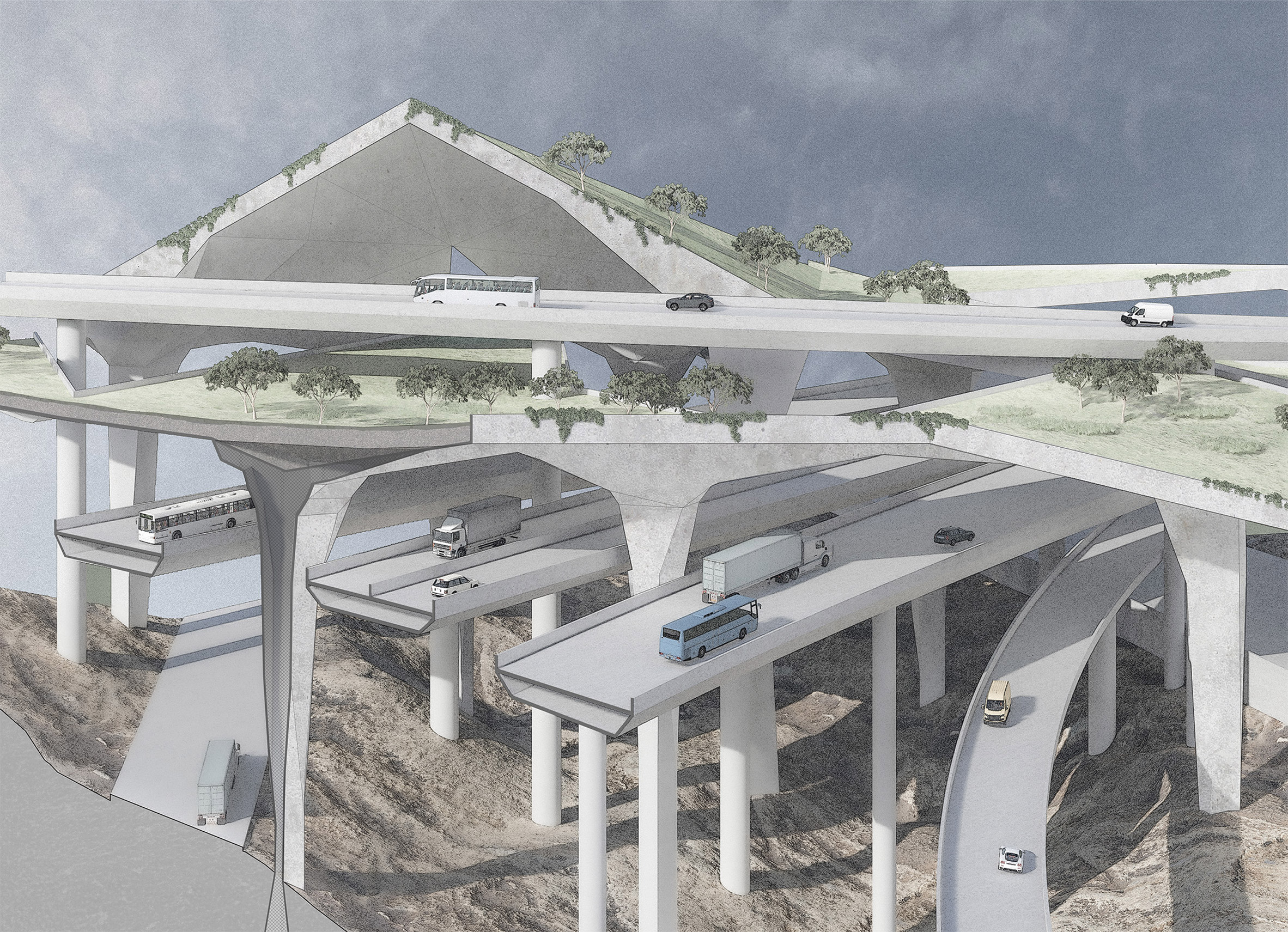
TerraCrux by Joseph Kim
"The ceaseless interplay between human and natural forces focuses on the errors of our inventions and reminds us of nature's everlasting presence.
"However, our efforts have left divisions in its realm, forcing the equilibrium to kneel to our errors.
"As our infrastructure falters, we will ensure that natural pathways resurface, interweaving with the very essence of our dominion.
"With the passage of time, aided by us, nature will thread through our past errors, restoring balance through its own fruition."
Student: Joseph Kim
Course: ARCH502A Errors and Omissions
Tutor: Eric Haas
Partnership content
This school show is a partnership between Dezeen and the University of Southern California. Find out more about Dezeen partnership content here.